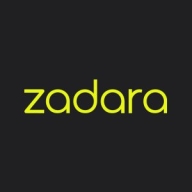

AWS Lambda and Zadara compete in cloud services, serverless computing, and storage solutions. AWS Lambda may have the edge in serverless architecture and integration, while Zadara holds strengths in storage flexibility and control in hybrid environments.
Features: AWS Lambda offers serverless architecture, automatic scaling, and native integration with Amazon services. These features help reduce infrastructure costs and allow for rapid development and deployment. On the other hand, Zadara stands out with significant storage flexibility, a single-tenant model, and support for hybrid and on-premises cloud implementations, offering bespoke solutions tailored to specific needs.
Room for Improvement: AWS Lambda faces challenges such as cold starts, execution time limits, and limited integration with non-AWS services, impacting developer experience and necessitating precise cost management. Zadara could enhance service delivery speed, improve feature implementation like object replication, and refine its management interface to aid service partners.
Ease of Deployment and Customer Service: AWS Lambda is praised for ease of use, particularly in cloud-native deployments, but is critiqued for documentation and beginner support. Switching between versions remains cumbersome, and demands for proactive support are growing. Zadara provides hybrid and on-premises deployment options, with responsive technical support that is self-service-oriented with room to broaden its support offerings.
Pricing and ROI: AWS Lambda appeals with its pay-as-you-go model, showing significant ROI for variable workloads but can incur rising costs with high invocation rates. Meanwhile, Zadara's all-inclusive pricing, covering a wide service range, can lead to savings in long-term operations, emphasizing cost efficiency through consumption-based payment.
The cost is not cheaper compared to AWS, and we have not seen the expected return on investment.
We lack adequate response times and a 24/7 service level agreement.
I rate the technical support from Zadara as nine out of ten.
I would rate how scalable AWS Lambda is a nine on a scale from 1 to 10, where 1 would be the lowest and 10 would be the highest level of scalability.
Zadara is a fully-fledged platform, and our customers are happy with its use.
Maintenance can also be complicated, especially when deeper troubleshooting requires navigating the CLI and searching for logs.
Adding AI capabilities could enhance the offering as well.
The pricing is considered expensive.
The most valuable feature is its storage management capability.
Zadara's troubleshooting feature is very valuable for me.
| Product | Market Share (%) |
|---|---|
| AWS Lambda | 18.2% |
| Zadara | 1.8% |
| Other | 80.0% |


| Company Size | Count |
|---|---|
| Small Business | 35 |
| Midsize Enterprise | 15 |
| Large Enterprise | 42 |
| Company Size | Count |
|---|---|
| Small Business | 12 |
| Large Enterprise | 3 |
AWS Lambda is a compute service that lets you run code without provisioning or managing servers. AWS Lambda executes your code only when needed and scales automatically, from a few requests per day to thousands per second. You pay only for the compute time you consume - there is no charge when your code is not running. With AWS Lambda, you can run code for virtually any type of application or backend service - all with zero administration. AWS Lambda runs your code on a high-availability compute infrastructure and performs all of the administration of the compute resources, including server and operating system maintenance, capacity provisioning and automatic scaling, code monitoring and logging. All you need to do is supply your code in one of the languages that AWS Lambda supports (currently Node.js, Java, C# and Python).
You can use AWS Lambda to run your code in response to events, such as changes to data in an Amazon S3 bucket or an Amazon DynamoDB table; to run your code in response to HTTP requests using Amazon API Gateway; or invoke your code using API calls made using AWS SDKs. With these capabilities, you can use Lambda to easily build data processing triggers for AWS services like Amazon S3 and Amazon DynamoDB process streaming data stored in Amazon Kinesis, or create your own back end that operates at AWS scale, performance, and security.
Zadara is a powerful enterprise-level storage solution whose design enables it to handle every aspect of a user’s data storage needs. It can be deployed in any location, using any protocol, and storing any data type that an organization requires. With Zadara, organizations can do everything that they were able to do with more traditional systems in a cheaper and more efficient way.
Zadara Benefits
Some of the ways that organizations can benefit by choosing to deploy Zadara include:
Zadara Features
File analytics. Organizations can leverage a powerful analytics package that can provide them with critical insights. These tools can help users sort through their data and make more informed data management decisions.
Reviews from Real Users
Zadara is a highly effective solution that stands out when compared to many of its competitors. Two major advantages it offers are its extensive suite of cloud solution integrations and its object storage capability.
Steve H., the chief technology officer at Pratum, writes, “One of the most valuable features is its integration with other cloud solutions. We have a presence within Amazon EC2 and we leverage computer instances there. Being able to integrate with computing, both locally within Zadara, as well as with other cloud vendors such as Amazon, is very helpful, while also being able to maintain extremely low latency between those connections.”
Mauro R., the CEO of Momit SRL, says, “The object storage feature is wonderful. With traditional storage, you have a cost per gigabyte that is extremely high or related to the number of disks. With Zadara Storage Cloud, you have a cost per gigabyte that you can cut and tailor to your needs independent of the number or size of the disks.”
We monitor all Compute Service reviews to prevent fraudulent reviews and keep review quality high. We do not post reviews by company employees or direct competitors. We validate each review for authenticity via cross-reference with LinkedIn, and personal follow-up with the reviewer when necessary.